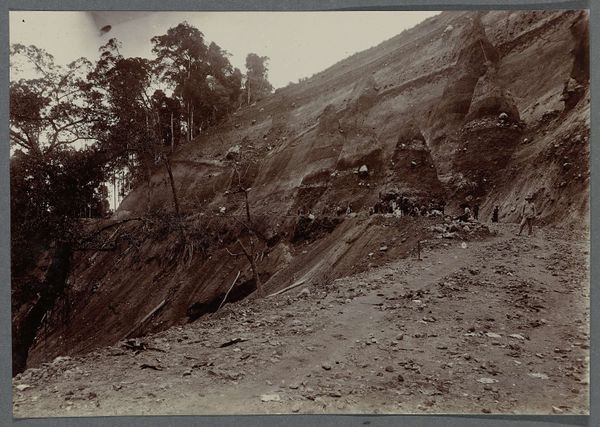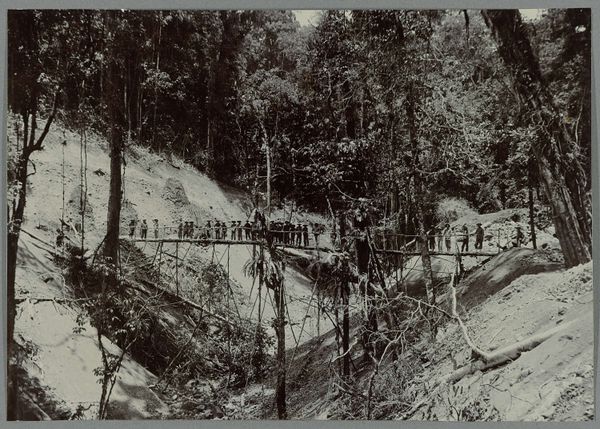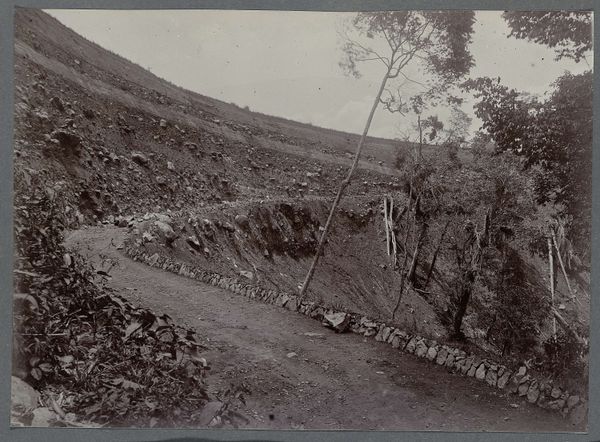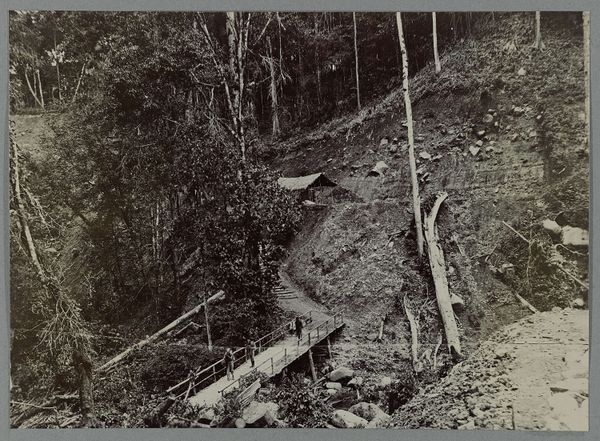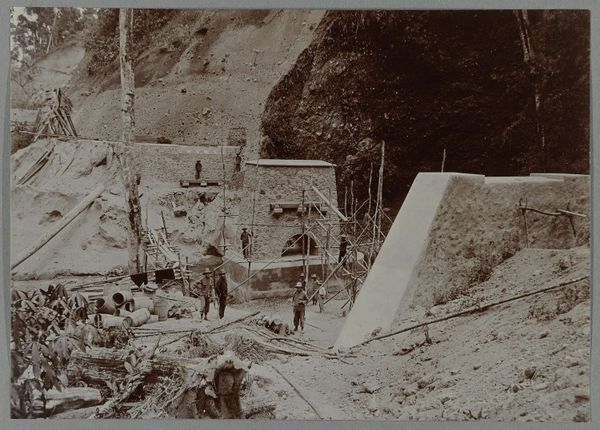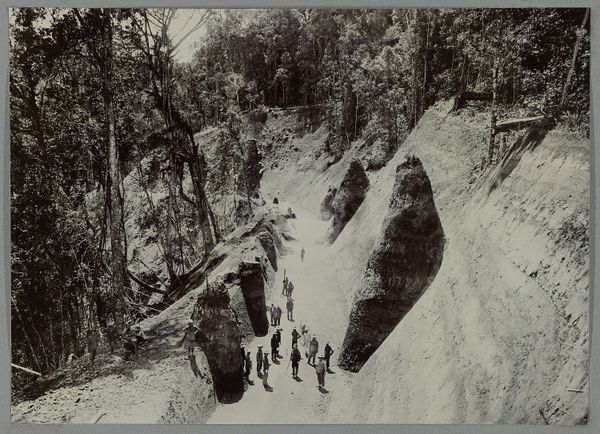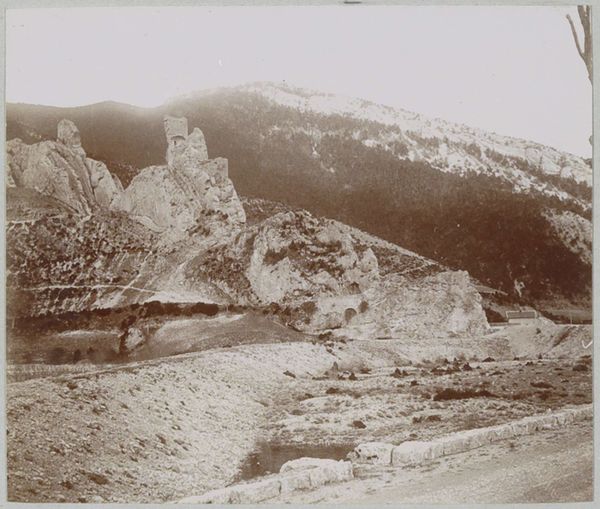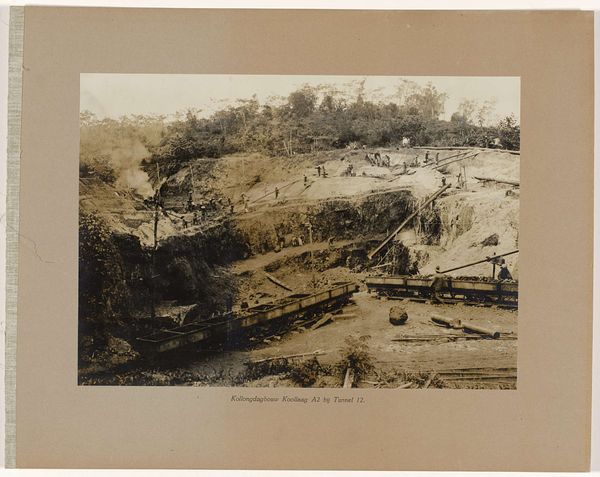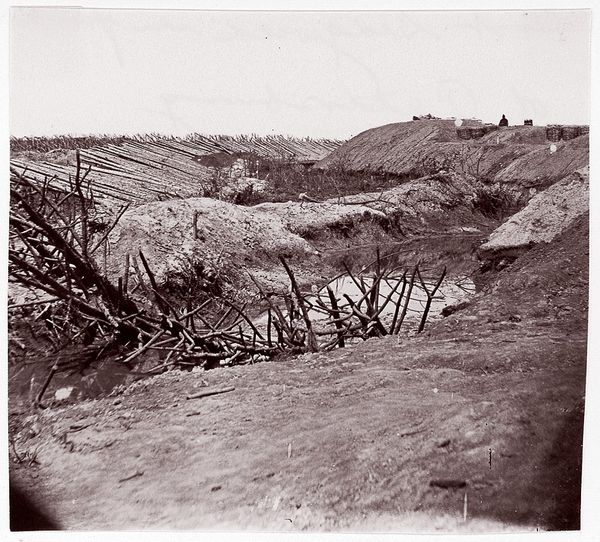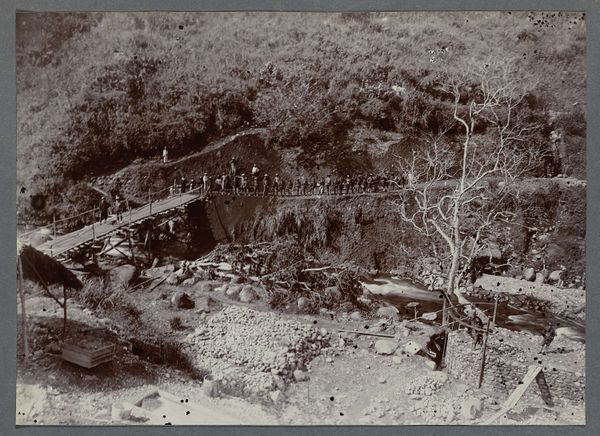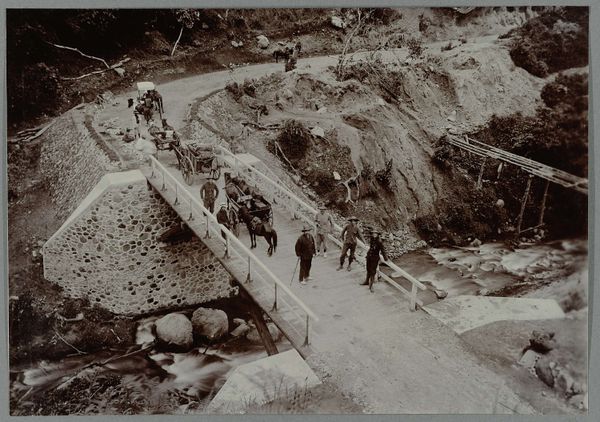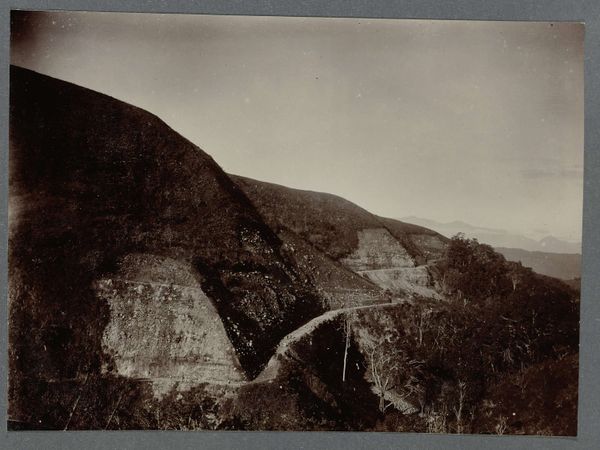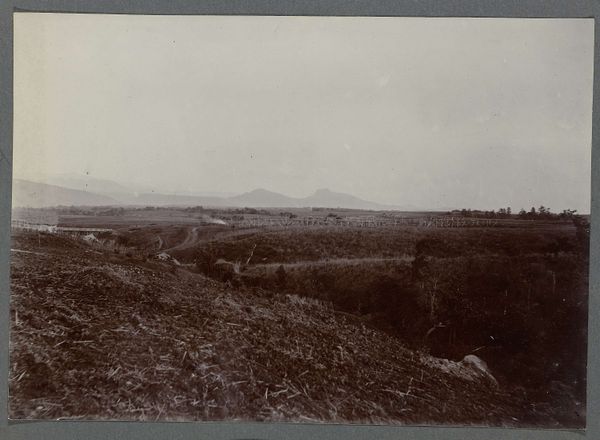
photography, albumen-print
#
landscape
#
photography
#
mixed media
#
albumen-print
Dimensions: height 138 mm, width 200 mm
Copyright: Rijks Museum: Open Domain
Curator: What a compelling photograph! This is "Construction of the Road along the Woih ni Kulos," taken sometime between 1910 and 1913. It appears to be an albumen print. Editor: My first impression is one of starkness. It feels almost post-apocalyptic. The tones are muted, focusing the eye on this raw, freshly-carved road cutting through the landscape. You really feel the weight of all that displaced earth and rock. Curator: Exactly! It is interesting to consider the implications of road construction during that period. This image, likely commissioned or used for colonial administration, showcases a calculated manipulation of the landscape to further exert control and project power, highlighting the inherent political nature of such infrastructure. Editor: I am fascinated by the technique, too. Albumen printing offered such incredible detail. You can practically feel the grit of the exposed rock, assess the human labor etched in every part of this road cutting through the landscape, but also, what kind of tools they were using, the primitive conditions. Curator: Precisely. The albumen print, in its own way, becomes a tool of the Empire as much as the picks and shovels! This piece prompts questions regarding the ethics of photography itself and invites reflection on whose stories get told. We often only get the narrative from the colonizer perspective. Editor: And this kind of picture is an artefact about making other artifacts; it is documenting how infrastructure facilitates resource extraction or control of access. It begs to be examined within the chain of resource consumption too. We can see a basic camp at the roadside here, and so ask "where did the materials come from?", "who assembled that construction?", and "who consumed that service?". Curator: Indeed, that the laboring people themselves aren't visibly represented reminds us of the politics of visual representation and the erasure inherent within this type of photography. This landscape isn't just reshaped; it is re-presented, packaged as progress. Editor: Absolutely. Looking closer reveals a narrative not of seamless advancement, but of disruption. Considering that landscape photographers tend to erase evidence of roads from 'natural' landscapes these photos also have interesting layers of reflexivity and materiality, to which their social purposes need to be added to get at how this was consumed by administrators and project planners. Curator: Thank you for highlighting that key nuance. Considering this, hopefully visitors can start to develop their own narratives regarding infrastructure and erasure by considering whose story is prioritized when this image was commissioned and subsequently consumed. Editor: Well, hopefully some of our visitors also can see how something as seemingly simple as a construction photo sparks considerations about landscape as cultural object.
Comments
No comments
Be the first to comment and join the conversation on the ultimate creative platform.
